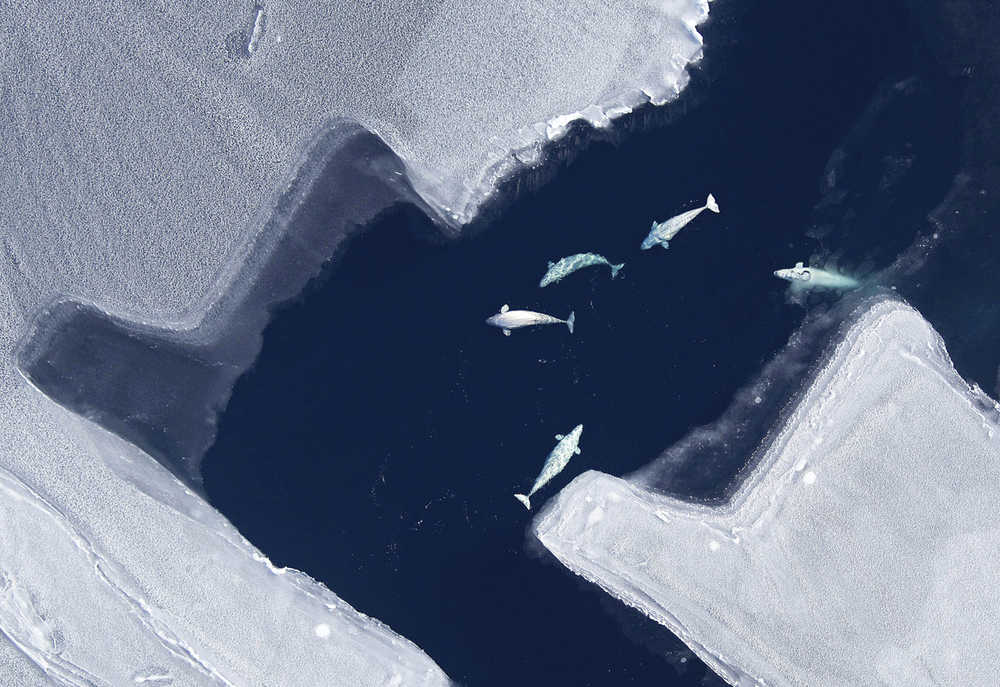ANCHORAGE — Beluga whales off Alaska’s northern coast target Arctic cod and will dive to great depths to reach them, according to data collected over 15 years that provides insight into their foraging patterns in the remote region undergoing profound changes from climate warming and a loss of sea ice.
The dive information on two U.S. Arctic Ocean beluga populations showed the white whales in the Chukchi and Beaufort seas diving as deep as 900 meters — or more than 2,950 feet.
The lead author of the study says it adds to the limited information scientists have on the diet and behavior of the two whale populations.
“In the context of a changing Arctic with changes in sea ice in particular, but also changes in anthropogenic interest, it’s sort of important to get some benchmarks and some baseline information,” said lead author Donna Hauser, a doctoral student in the University of Washington’s School of Aquatic and Fishery Sciences.
Belugas are small, toothed whales born gray that turn white as they age. They have muscular bodies with distinctive, bulbous structures on the forehead and a thick blubber layer that can be 5 inches thick, according to the Alaska Department of Fish and Game.
Male belugas grow as long as 15 feet and females to 12 feet. They feed on salmon, crab, shrimp, squid, clams and small schooling fish such as herring, capelin, smelt and cod. They are hunted by Alaska Native subsistence hunters.
Alaska has five populations of beluga whales. Two spend winters in the Bering Sea, and when sea ice melts head through the Bering Strait into the Chukchi or Beaufort seas.
During the study, researchers applied tags linked to satellites to whales. When tagged belugas surfaced to breathe, the tags would transmit locations and dive depths.
Hauser and other researchers looked at data collected from 30 whales tagged over 15 years from 1997 to 2012. One retained a tag for 18 months.
Polar bears and Pacific walrus need sea ice as a platform for hunting. Beluga whales can move around it.
The researchers tracked belugas into feeding areas that formerly had been covered year-round with sea ice, trying to learn what habitat they use on their long migrations.
Without much information about the diet of belugas in the Arctic Ocean, Hauser and other researchers matched dive information to data they had on the location of schools of Arctic cod and found a correlation.
The whales likely made dives based on where prey was concentrated by oceanographic features such as undersea slopes from shallow to deep water, Hauser said. The whales commonly dove 650 to 1,000 feet.
“So we could confirm, for one thing, that there was this correspondence between the depths the Chukchi belugas were diving and the depths at which Arctic cod were most abundant,” she said.
The tags attached to the belugas could record dives to 1,000 meters, or 3,280 feet. One male beluga dove to 956 meters, or more than 3,100 feet, in the Canada Basin, which reaches depths of more than 10,000 feet. Researchers don’t know why belugas would dive so deep there, Hauser said.
The research was published in the journal Marine Ecology Progress Series in December.

